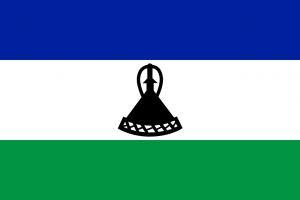Difference between revisions of "Language/Southern-sotho/Grammar/Asking-Questions"
m (Quick edit) |
m (Quick edit) |
||
| Line 123: | Line 123: | ||
<span gpt></span> <span model=gpt-3.5-turbo></span> <span temperature=1></span> | <span gpt></span> <span model=gpt-3.5-turbo></span> <span temperature=1></span> | ||
==Other Lessons== | |||
* [[Language/Southern-sotho/Grammar/How-to-Use-Be|How to Use Be]] | |||
* [[Language/Southern-sotho/Grammar/The-Alphabet-and-Pronunciation|The Alphabet and Pronunciation]] | |||
* [[Language/Southern-sotho/Grammar/Conditional-Mood|Conditional Mood]] | |||
* [[Language/Southern-sotho/Grammar/Negating-Sentences|Negating Sentences]] | |||
* [[Language/Southern-sotho/Grammar/Questions|Questions]] | |||
* [[Language/Southern-sotho/Grammar/How-to-Use-Have|How to Use Have]] | |||
* [[Language/Southern-sotho/Grammar/Describing-Verbs|Describing Verbs]] | |||
* [[Language/Southern-sotho/Grammar/Present-Tense|Present Tense]] | |||
* [[Language/Southern-sotho/Grammar/Past-Tense|Past Tense]] | |||
* [[Language/Southern-sotho/Grammar/Basic-Sentence-Structure|Basic Sentence Structure]] | |||
{{Southern-sotho-Page-Bottom}} | {{Southern-sotho-Page-Bottom}} | ||
Revision as of 21:22, 2 April 2023
Introduction
In this lesson, you will learn how to form different types of questions in Southern Sotho. Asking questions is an essential part of communication, and this lesson will teach you how to form different types of questions, including yes/no questions, wh-questions, and question tags.
Forming Yes-No Questions
Yes-no questions are questions that require a yes or no answer. In Southern Sotho, the most common way to form yes-no questions is by adding "na" at the end of a statement. Here is an example:
| English | Southern Sotho |
|---|---|
| You are a student. | U a sebetsana. |
| Are you a student? | U a sebetsana na? |
As you can see, adding "na" at the end of the statement changes it into a question. It is important to note that the word order for a yes-no question remains the same as a statement, subject-verb-object order.
Forming Wh-Questions
Wh-questions are questions that start with words like "what," "who," "where," "when," "why," and "how." In Southern Sotho, the word order for a wh-question is often different from that of a statement. The wh-word is placed at the beginning of the sentence, followed by the subject, verb, and object.
Here are some examples:
| English | Southern Sotho |
|---|---|
| What is your name? | Ke mang mang? |
| Who are you? | O ngwana mang? |
| Where do you live? | O lapile kae? |
As you can see, the wh-word is placed at the beginning of the sentence, followed by the subject, verb, and object. It is also important to note that the word "ke" is used to mean "is" in Southern Sotho.
Question Tags
Question tags are short questions that are added at the end of a statement to turn it into a question. In Southern Sotho, question tags are formed by adding "ke" at the end of the statement if it is positive, or "a o" if it is negative.
Here are some examples:
| English | Southern Sotho |
|---|---|
| You are a student, aren't you? | U a sebetsana, ke? |
| You don't like pizza, do you? | Ha o tla rena pizza, a o? |
As you can see, question tags are formed by adding "ke" or "a o" at the end of the statement, depending on whether it is positive or negative.
Negating Sentences
In Southern Sotho, negating a sentence is done by adding "ha" before the verb. Here is an example:
| English | Southern Sotho |
|---|---|
| I am hungry. | Ke na lapeng. |
| I am not hungry. | Ha ke na lapeng. |
As you can see, adding "ha" before the verb turns the sentence into a negative statement.
Negative Questions
Negative questions are questions that are used to confirm something that is negative. In Southern Sotho, negative questions are formed by using "a o" at the beginning of the sentence.
Here is an example:
| English | Southern Sotho |
|---|---|
| You didn't go to school, did you? | A o ile le koloing? |
As you can see, negative questions are formed by using "a o" at the beginning of the sentence.
Practice
Now that you have learned how to form different types of questions and negative statements in Southern Sotho, it's time to practice. Below are some practice exercises to test your understanding of the lesson topics.
Exercise 1
Form yes-no questions based on the following statements:
- Ke na le nku. (Do I have a dog?)
- Ke tla lefella. (Will I be late?)
- Ke tla lemoga. (Will I be happy?)
Exercise 2
Form wh-questions based on the following statements:
- Ke hlalosetsa. (What am I explaining?)
- Ke tla tsamaela ngwana. (When will I fetch the child?)
- O tla bolela sefate sa hao. (What will you say about your hat?)
Exercise 3
Form question tags based on the following statements:
- Ke batla ho tsamaea (I want to go, don't I?)
- U nthuse ho tsamaea (You help me to go, don't you?)
- Re ithutele seo re se ratang (We learned what we love, didn't we?)
Conclusion
In this lesson, you have learned how to form different types of questions and negative statements in Southern Sotho, including yes-no questions, wh-questions, and question tags. Remember to practice regularly to improve your skills and fluency in the language.
Other Lessons
- How to Use Be
- The Alphabet and Pronunciation
- Conditional Mood
- Negating Sentences
- Questions
- How to Use Have
- Describing Verbs
- Present Tense
- Past Tense
- Basic Sentence Structure
